The AMD Radeon VII Review: An Unexpected Shot At The High-End
by Nate Oh on February 7, 2019 9:00 AM ESTFinal Fantasy XV (DX11)
Upon arriving to PC earlier this, Final Fantasy XV: Windows Edition was given a graphical overhaul as it was ported over from console, fruits of their successful partnership with NVIDIA, with hardly any hint of the troubles during Final Fantasy XV's original production and development.
In preparation for the launch, Square Enix opted to release a standalone benchmark that they have since updated. Using the Final Fantasy XV standalone benchmark gives us a lengthy standardized sequence to utilize OCAT. Upon release, the standalone benchmark received criticism for performance issues and general bugginess, as well as confusing graphical presets and performance measurement by 'score'. In its original iteration, the graphical settings could not be adjusted, leaving the user to the presets that were tied to resolution and hidden settings such as GameWorks features.
Since then, Square Enix has patched the benchmark with custom graphics settings and bugfixes to be more accurate in profiling in-game performance and graphical options, though leaving the 'score' measurement. For our testing, we enable or adjust settings to the highest except for NVIDIA-specific features and 'Model LOD', the latter of which is left at standard. Final Fantasy XV also supports HDR, and it will support DLSS at some later date.
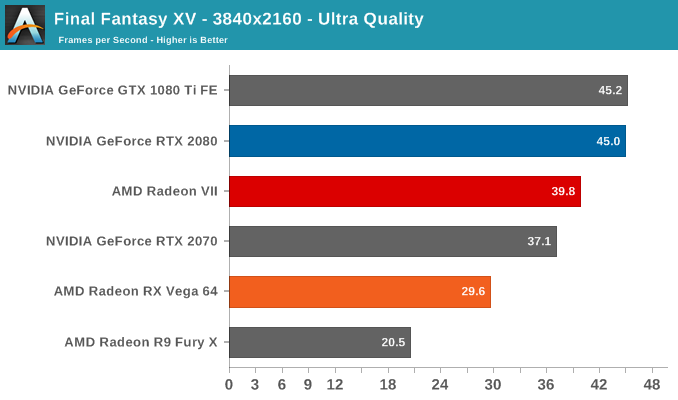
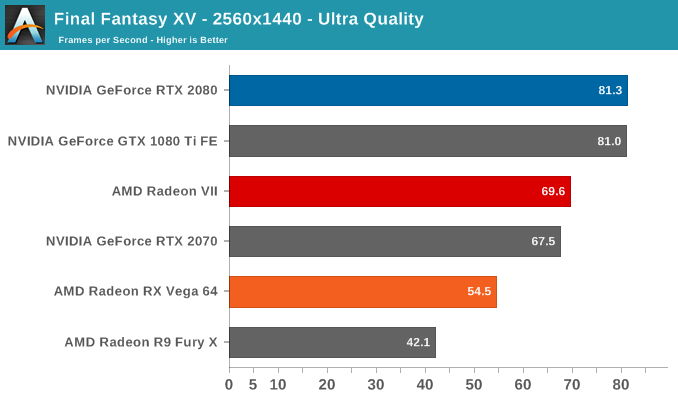
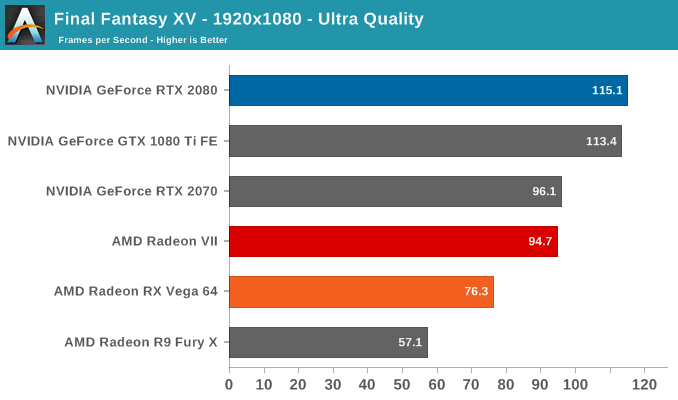
Moving on to Final Fantasy XV, the Radeon VII's showing here is one of the least ideal scenarios. The game has historically performed well on NVIDIA hardware, so the RTX and GTX performance levels are well-known. With a lot of ground to cover from RX Vega 64's starting point, the Radeon VII does well in pushing up to a 34% speedup at 4K and 28% at 1440p. While that is enough to overtake the reference RTX 2070 at 4K/1440p, the RTX 2080 and GTX 1080 Ti FE remain out of reach.
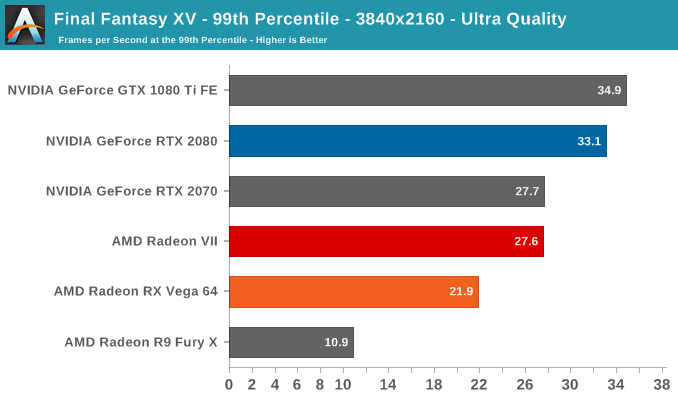
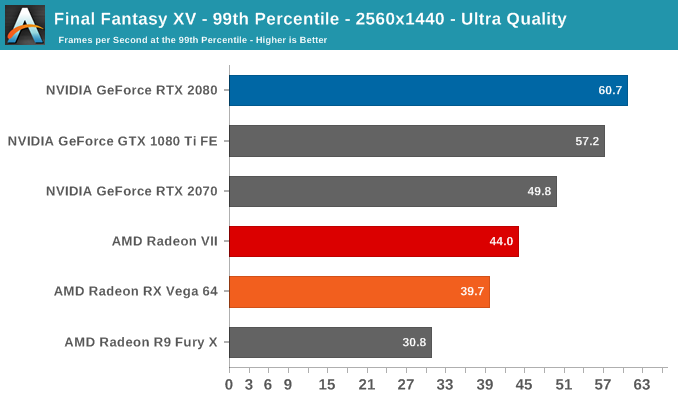
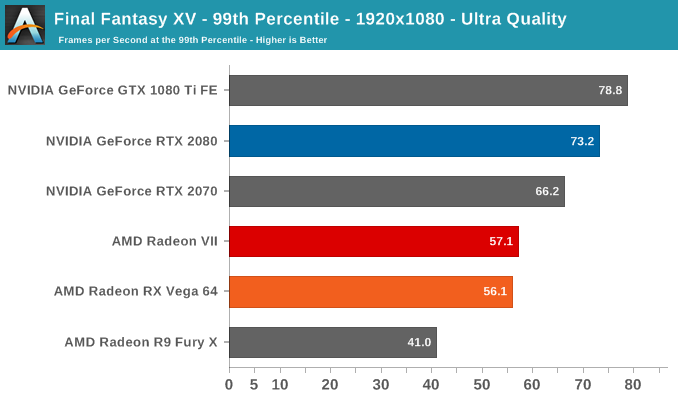











289 Comments
View All Comments
mapesdhs - Friday, February 8, 2019 - link
It's going to be hillariously funny if Ryzen 3000 series reverses this accepted norm. :)mkaibear - Saturday, February 9, 2019 - link
I'd not be surprised - given anandtech's love for AMD (take a look at the "best gaming CPUs" article released today...)Not really "hilariously funny", though. More "logical and methodical"
thesavvymage - Thursday, February 7, 2019 - link
It's not like itll perform any better though... Intel still has generally better gaming performance. There's no reason to artificially hamstring the card, as it introduces a CPU bottleneckbrokerdavelhr - Thursday, February 7, 2019 - link
Once again - in gaming for the most part....try again with other apps and their is a marked difference. Many of which are in AMD's favor. try again.....jordanclock - Thursday, February 7, 2019 - link
In every scenario that is worth testing a VIDEO CARD, Intel CPUs offer the best performance.ballsystemlord - Thursday, February 7, 2019 - link
There choice of processor is kind of strange. An 8-core Intel on *plain* 14nm, now 2! years old, with rather low clocks at 4.3Ghz, is not ideal for a gaming setup. I would have used a 9900K or 2700X personally[1].For a content creator I'd be using a Threadripper or similar.
Re-testing would be an undertaking for AT though. Probably too much to ask. Maybe next time they'll choose some saner processor.
[1] 9900K is 4.7Ghz all cores. The 2700X runs at 4.0Ghz turbo, so you'd loose frequency, but then you could use faster RAM.
For citations see:
https://www.intel.com/content/www/us/en/products/p...
https://images.anandtech.com/doci/12625/2nd%20Gen%...
https://images.anandtech.com/doci/13400/9thGenTurb...
ToTTenTranz - Thursday, February 7, 2019 - link
Page 3 table:- The MI50 uses a Vega 20, not a Vega 10.
Ryan Smith - Thursday, February 7, 2019 - link
Thanks!FreckledTrout - Thursday, February 7, 2019 - link
I wonder why this card absolutely dominates in the "LuxMark 3.1 - LuxBall and Hotel" HDR test? Its pulling in numbers 1.7x higher than the RTX 2080 on that test. That's a funky outlier.Targon - Thursday, February 7, 2019 - link
How much video memory is used? That is the key. Since many games and benchmarks are set up to test with a fairly low amount of video memory being needed(so those 3GB 1050 cards can run the test), what happens when you try to load 10-15GB into video memory for rendering? Cards with 8GB and under(the majority) will suddenly look a lot slower in comparison.